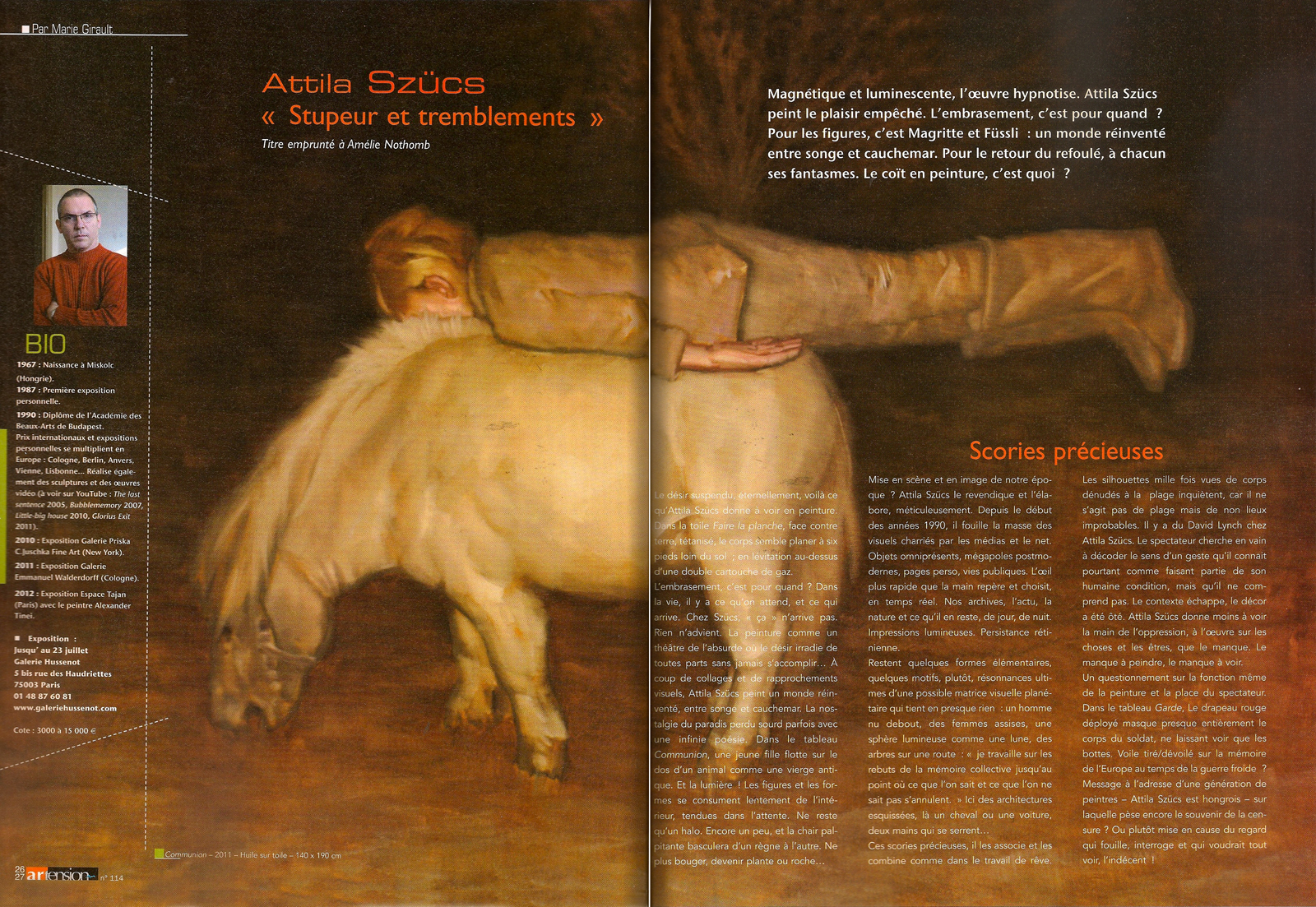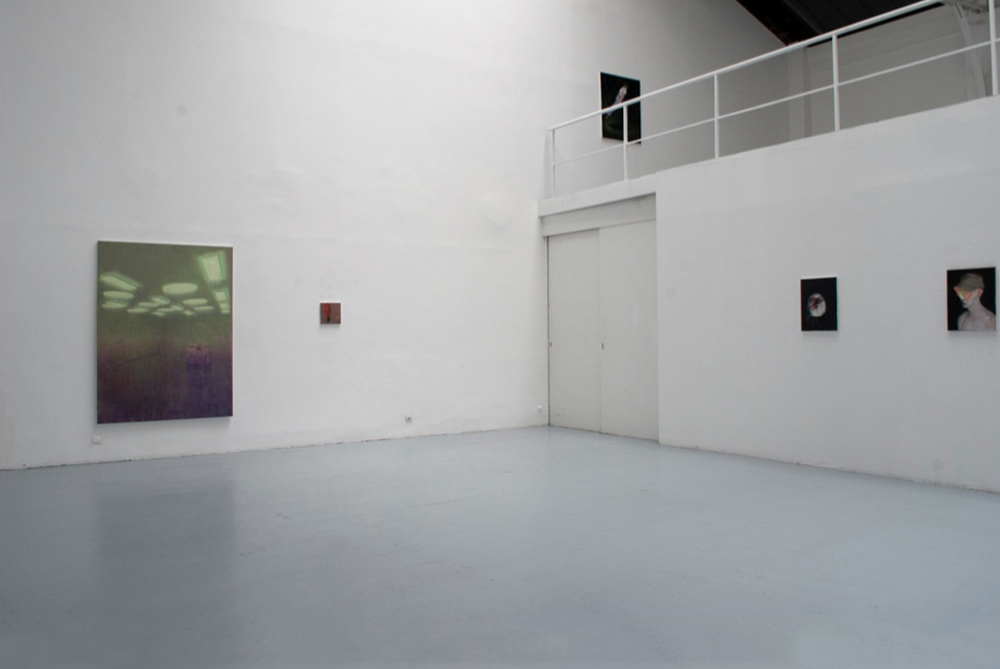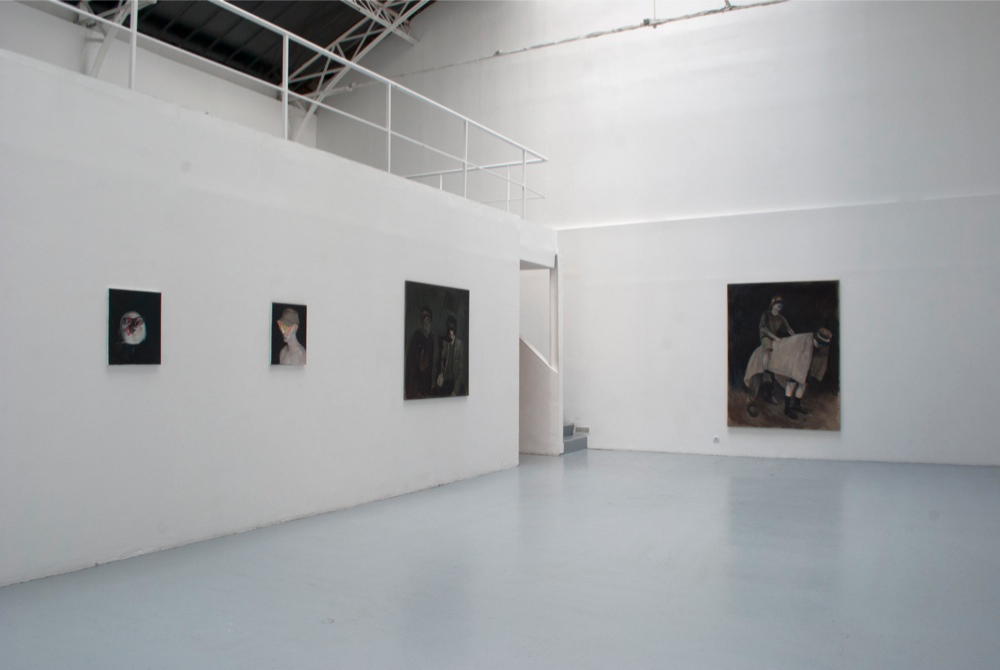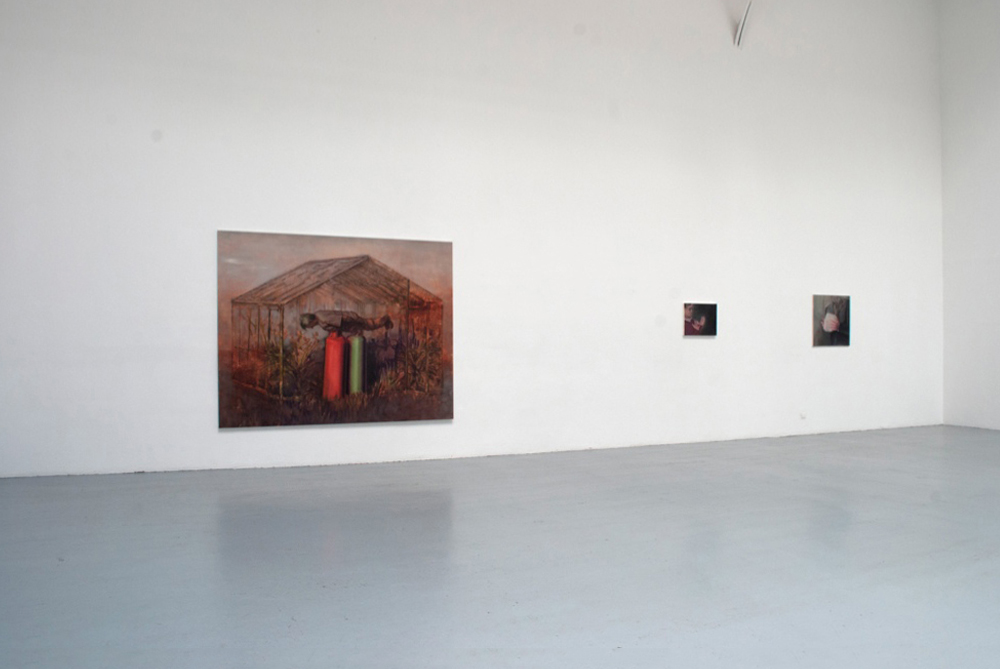New Paintings, / with Alexander Tinei /, Galerie Hussenot, Paris
New Paintings 2012
/ with Alexander Tinei /,
Galerie Hussenot, Paris

Magnetic and luminescent, the work hypnotizes. Attila Szűcs paints suppressed pleasure. When will the conflagration take place? For the figures, it's Magritte and Füssli: a reinvented world between dream and nightmare. For the return of the repressed, each to their own fantasies. What is coitus in painting?
Suspended desire, eternally, this is what Attila Szűcs guesses to see in painting. In the canvas Faire la planche, face down, paralyzed, the body seems to hover six feet above the ground, levitating above a double gas cartridge. When will the conflagration take place? In life, there is what we wait for, and what happens. With Szűcs, this doesn't happen. Nothing happens. Painting is like a theater of the absurd where desire radiates from all sides without ever being fulfilled... Through collages and visual comparisons, Attila Szűcs paints a reinvented world, between dream and nightmare. The nostalgia for paradise lost sometimes wells up with infinite poetry. In the painting Communion, a young girl floats on the back of an animal like an ancient virgin. And the light! The figures and forms slowly burn from within, tense in anticipation. Only a halo remains. A little longer, and the palpitating flesh will shift from one realm to another. No longer move, become plant or rock.
Staging and visualizing our era? Attila Szűcs claims it and elaborates it meticulously. Since the early 1990s, he has been combing through the mass of visuals carried by the media and the internet. Ubiquitous objects, postmodern megacities, personal pages, public lives. The eye, quicker than the hand, spots and selects, in real time. Our archives, current events, nature and what remains of it, day and night. Luminous impressions. Persistence of vision.
A few elementary forms remain, a few motifs, rather, ultimate resonances of a possible planetary visual matrix that contains almost nothing: a standing naked man, seated women, a luminous sphere like a moon, trees on a road. I work on the scraps of collective memory to the point where what we know and what we don't know cancel each other out. Here, sketched architectures, there, a horse or a carriage, two hands clasping...
He combines and assembles these precious scraps as if in a dream.
The thousand-times-seen silhouettes of naked bodies on the beach are disturbing, because they are not beaches but improbable non-places. There is something of David Lynch in Attila Szűcs. The viewer seeks in vain to decode the meaning of a gesture that he nevertheless knows as part of his human condition, but which he does not understand. The context escapes, the gap has been removed. Attila Szűcs shows less the hand of oppression, at work on things and beings, than the lack. The lack to paint, the lack to voice. A questioning of the very function of painting and the place of the viewer. In the painting Guard, the unfurled red flag almost entirely masks the soldier's body, leaving only the boots visible. A veil drawn/unveiled on the memory of Europe during the Cold War? A message to a generation of painters—Attila Szűcs is Hungarian—still burdened by the memory of censorship? Or rather, a challenge to the gaze that searches, questions, and seeks to see everything.
The indecent!
Par Marie Girault
Artension Artension n.114
Installation photos




